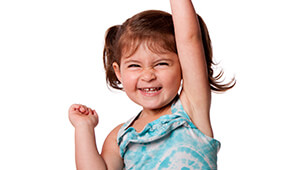When Is It Time for Potty


Between 2 and 3, many children exhibit an interest in using the potty. If you feel your little one is ready, here are some toilet-training tips that work.
Introduction
First-time parents may scour books and query relatives about when to begin teaching their child to use the toilet. But the best hints about readiness come from your child, and for most kids, those signs don’t usually appear until at least age 2.
Before you even begin to consider whether your child is ready psychologically, it helps to understand the physical factors that come into play. During the first 12 to 18 months, a child has little or no control over the flow of urine and bowel movements. That’s because the sphincter muscles work automatically until about age 1 and then gradually become voluntary. By about 18 months, your child can finally begin to make the connection between having a full bladder and releasing urine.
While the general trend in toilet learning during the last generation has been to take a wait-and-see approach so as not to pressure children, any youngster over 18 months who expresses an interest in toilet learning can be taught. Some signs that your child may indeed be ready include:
- understanding the meaning of words such as pee-pee and poo-poo or, if your family prefers, the technically correct words;
- a strong, clear preference for dry, clean diapers;
- an ability to postpone the urge to go (some toddlers may wake up dry from naps; others may go off alone and return wet or soiled);
- an understanding of what the toilet is used for;
- an ability to imitate the behavior of others;
- an awareness of the connection between going on the potty and a dry diaper.
And the clearest sign of all? Some children, especially those with an older sibling, may simply announce an eagerness to stop wearing diapers.
Even before you sense readiness, you can help guide your toddler in the right direction. One important way is to make sure he’s familiar with the lingo. Tell him what it means to be wet or to make “poo-poo,” and when changing his diaper, explain matter-of-factly what has occurred.
Help your child feel comfortable with the bathroom. Let him flush the toilet and tear toilet paper (a favorite activity at this age), and help him wash his hands at the sink with the help of a step stool. Let your child observe you (or your spouse, depending on the child’s gender), an older sibling, or a potty-trained pal using the toilet.
It’s good to buy a potty chair before you start formal training. Let your child use the potty seat as a chair while looking at books so he becomes comfortable with it before the learning process begins.


